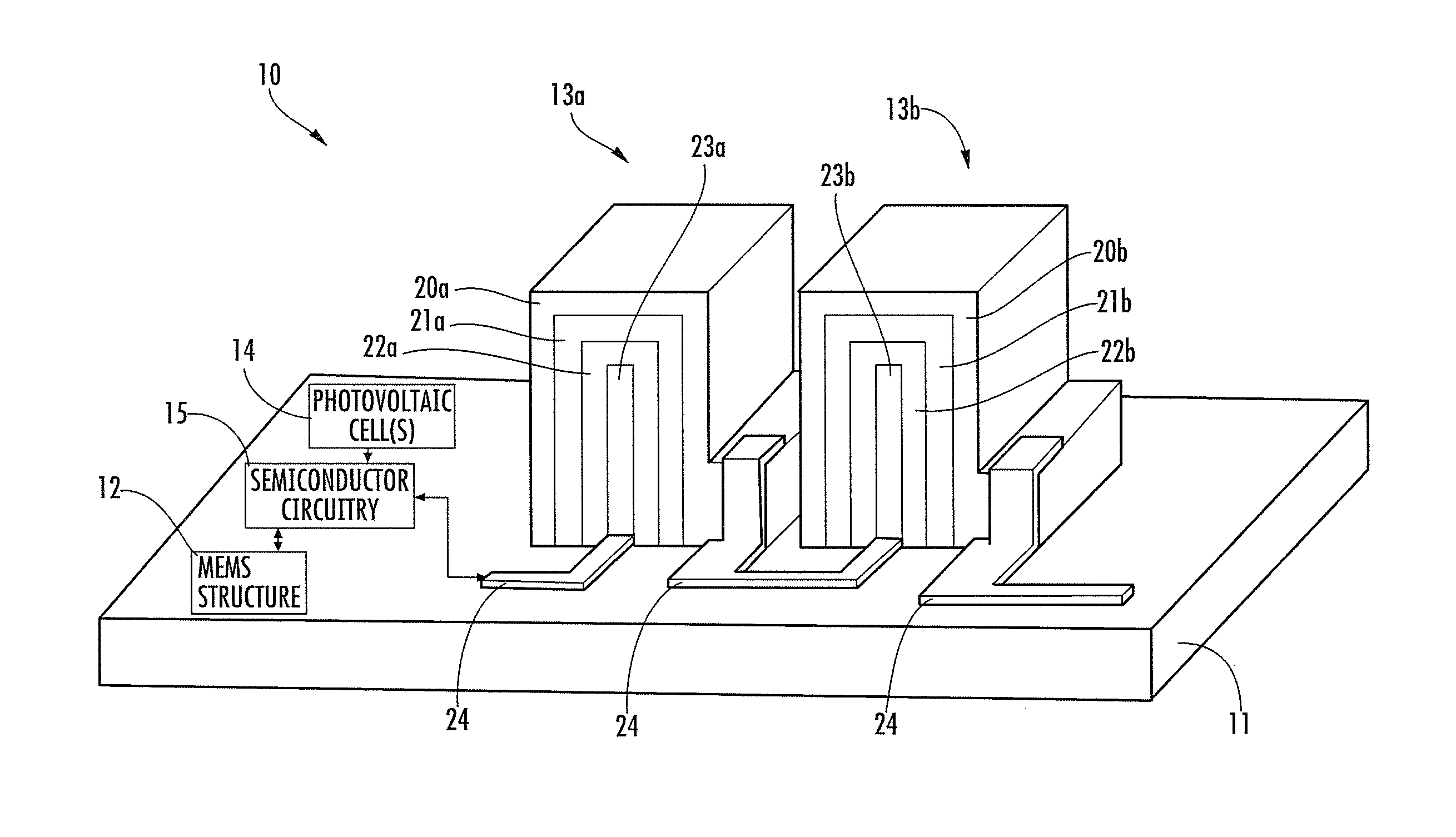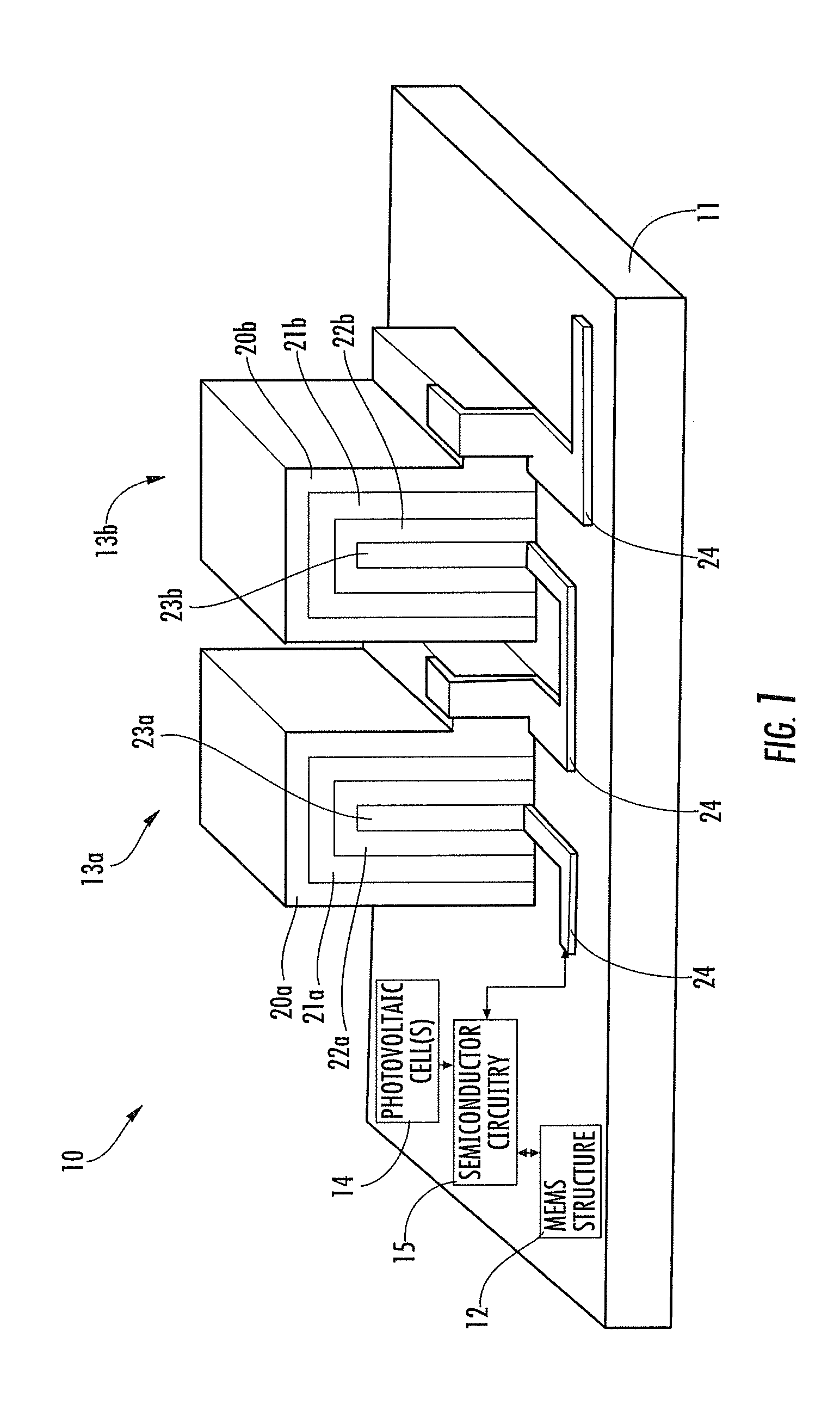Battery cell for MEMS device and related methods
a battery cell and mems technology, applied in the field of micro electricalmechanical systems, can solve the problems of not being desirable, convenient or feasible to draw power from an external source, not being desirable, and consuming a large percentage of the available space on the silicon substrate, etc., to achieve the effect of long li
- Summary
- Abstract
- Description
- Claims
- Application Information
AI Technical Summary
Benefits of technology
Problems solved by technology
Method used
Image
Examples
Embodiment Construction
[0018]The present invention will now be described more fully hereinafter with reference to the accompanying drawings, in which preferred embodiments of the invention are shown. This invention may, however, be embodied in many different forms and should not be construed as limited to the embodiments set forth herein. Rather, these embodiments are provided so that this disclosure will be thorough and complete, and will fully convey the scope of the invention to those skilled in the art. Like numbers refer to like elements throughout, and prime notation is used to show similar elements in other embodiments.
[0019]Referring initially to FIG. 1, a MEMS device 10 is now described. The MEMS device 10 includes a MEMS substrate 11 that carries two battery cells 13a, 13b, a MEMS structure 12, a photovoltaic cell 14, and semiconductor circuitry 15. The MEMS structure 12, the photovoltaic cell 14, and the semiconductor circuitry 15 are coupled to the battery cells 13a, 13b via conductive traces ...
PUM
| Property | Measurement | Unit |
|---|---|---|
| Height | aaaaa | aaaaa |
| Height | aaaaa | aaaaa |
| Temperature | aaaaa | aaaaa |
Abstract
Description
Claims
Application Information
 Login to View More
Login to View More - R&D
- Intellectual Property
- Life Sciences
- Materials
- Tech Scout
- Unparalleled Data Quality
- Higher Quality Content
- 60% Fewer Hallucinations
Browse by: Latest US Patents, China's latest patents, Technical Efficacy Thesaurus, Application Domain, Technology Topic, Popular Technical Reports.
© 2025 PatSnap. All rights reserved.Legal|Privacy policy|Modern Slavery Act Transparency Statement|Sitemap|About US| Contact US: help@patsnap.com



